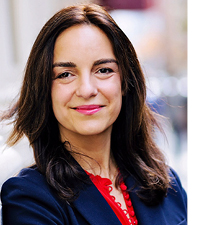Dear Friends,
The November midterm election will have important consequences for health care in this country at both the federal and state levels. About four in 10 Americans who voted, regardless of political affiliation, chose health care as the most important problem facing our country. The Affordable Care Act (ACA), which Republicans voted to repeal over 70 times, has gone from being unpopular to popular in the eight years since it was passed. Many voters voted to expand its provisions rather than weaken them. For example, the deeply Republican states of Utah, Nebraska and Idaho all voted to expand Medicaid, thus bringing coverage to almost 300,000 more people. In addition, states such as Kansas, Maine, Michigan, Nevada, New Mexico and Wisconsin may all see Medicaid expansions from more Medicaid-friendly new governors. This means that at a federal level, new efforts to repeal the ACA or dismantle Medicaid are effectively dead.
However, there are still 30 million people in this country who lack coverage, putting their health and finances at risk. Furthermore, the cost of coverage and care continues to rise, putting a large financial strain on many of us. More than seven in 10 Americans say our system needs major changes. As Drew Altman, the president of the Henry J Kaiser Family Foundation, said, “The big crisis in health care now is a crisis of out of pocket costs for people who are sick.”
So how do we address this? In light of the anticipated gridlock in Congress, what can we do to make positive changes that bring down the costs for everyone? State legislatures can play a critical role in stabilizing insurance markets and lowering costs. Here are three ideas that could make a big difference:
- A state mandate: forcing people to buy insurance has never been popular, but what if I told you that state-based mandates could lower the costs of premiums for everyone, and insure millions more people? The Urban Institute calculated the cost impact of individual mandates and found that if all states mandated health insurance coverage, the number of uninsured would fall by almost 4 million in 2019 alone, and premiums would decrease by almost 12percent. That’s a good deal for something that most people want anyway.
- Direct premium assistance for people earning below $72,000 per year: The ACA doesn’t offer any premium assistance to those making more than $48,000 per year. This hurts residents of cities like New York, Chicago, Los Angeles and San Francisco, where the cost of living is high. You would have to make $122,000 peryear in New York City to have the same standard of living as someone making $48,000 peryear in Kansas City. Yet the law doesn’t account for these differences because it’s based on the Federal Poverty Level, which is the same for all states (except Hawaii and Alaska). In addition, the discrepancy between what a New Yorker earning $22,000 per year and one earning $60,000 per year has to pay for health insurance is large: the New Yorker making $22,000 is eligible for the Essential Plan, which is $20 per month, has no deductible and low co-pays. This is effectively 1 percent of their income. The New Yorker making $60,000per year would have to pay 12percent of their income for the same level of coverage. This is why we recommend expanding premium assistance to those making up to $72,000 peryear. In New York alone, this could alleviate the financial burden on approximately 41,000 people.
- Essential Plan Buy-In for those making up to $30,000 per year: Above I mentioned the Essential Plan, which is an effective insurance program made possible by the ACA that only New York and Minnesota have chosen to institute. Those making below $24,000 per year get comprehensive coverage for $20 per mo. However, if you make $25,000 per year, you are not eligible for the plan. You have to pay over $400 per month for the same level of coverage. Increasing eligibility for the Essential Plan to those making $30,000 per year would significantly reduce costs for over 116,000 New Yorkers alone. In fact, just a couple weeks ago, Sen. Kirsten Gillibrand introduced the Basic Health Program Expansion Act of 2018, which would allow all states to expand access to the Essential Plan to those making up to $48,000 per year. Imagine, anyone in America making less than $48,000 per year being eligible for comprehensive, no-deductible insurance for around $20 per mo. Sound good?
If you feel that these ideas make sense, let your state and federal elected officials know. They can’t read your minds! Tell them that you support these ideas. And if you make between $25,000-$30,000 per year, or between $48,000 - $72,000 per year, please contact me at rmarinaro@actorsfund.org. I want to hear your story! It may be helpful ineducating your state legislators about the impact of the high premium and out of pocket costs on your health care decisions.
Yours in good health,

Renata Marinaro
Do you work in performing arts and entertainment and have questions about health insurance? The Actors Fund provides assistance nationally. Contact our regional office closest to you to speak to a counselor.
New York City
917.281.5975
Los Angeles
855.491.3357
Don’t forget to use the resources section of our website. It contains tools to help you make decisions about your health insurance, including new online tutorials on how to choose providers and how to read an Explanation of Benefits. In addition, you’ll find an updated Stage Managers National Health Directory, our national online directory of health care providers recommended by industry professionals that can be used by theaters and touring companies. For these resources and more, visit actorsfund.org/HealthServices. You can also find out more about enrollment assistance and upcoming health insurance seminars near you!